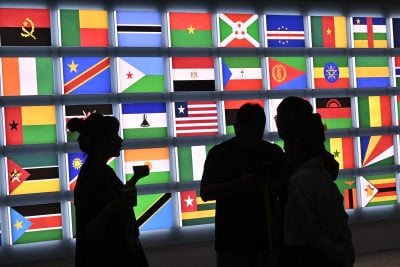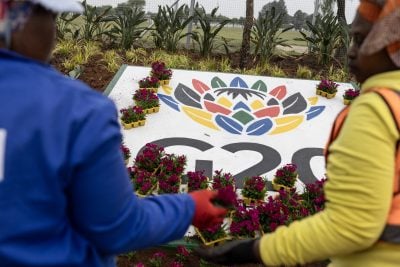Tanzania’s Standard Gauge Railway (SGR) project is progressing towards a significant milestone with the upcoming launch of the 300km section connecting the port city of Dar es Salaam to Morogoro. After successful trials in February, full operations on the newly built electrified line are set to commence by July, according to chief government spokesperson Mobhare Matinyi.
The SGR electric trains are expected to cut the travel time between Dar and Morogoro to about two hours from the current four-hour journey by bus and five hours by train on the old metre gauge railway. This development is particularly welcome given the project’s history of persistent delays since 2017. Now, attention has turned to the government’s ability to swiftly advance the remaining phases of the project. Ultimately, the SGR aims to connect Tanzania with neighbouring Burundi, fostering regional trade and integration.
Funding secured
The financing required to move the SGR project forward has been secured. The African Development Bank in December approved $696.41m of financing for Burundi and Tanzania to build the 651km line. AfDB will provide $98.62m to Burundi in the form of grants and $597.79m to Tanzania by way of loans and guarantees.
The entire project spanning Tanzania and Burundi carries an estimated price tag of $3.93bn. The AfDB is poised to play a pivotal role in mobilising funding from various financial institutions to support the endeavour. The bank will structure and mobilise financing of up to $3.2bn from commercial banks, development finance institutions, export credit agencies and institutional investors,” it notes.
The SGR will facilitate smoother trade and bolster manufacturing by connecting strategic locations such as industrial parks, inland container depots, and major population centres. This connectivity is expected to reduce reliance on the current road trucking system, which is more prone to accidents and largely to blame for high road maintenance costs. The anticipated reduction in road traffic may also lead to a decrease in transportation-related emissions, contributing to environmental conservation efforts.
Spurring additional investments
Churchill Ogutu, an economist at IC Group in Mauritius, believes the SGR will transform Tanzania by spurring additional infrastructure investments along the railway corridor.
“Over and above the rail project, Tanzania will be required to ramp up infrastructural investments in roads and inland water way channels, in addition to improving the port efficiency, for it to capture the gains that are to accrue,” he tells African Business.
Ogutu says that the project is beneficial for the wider East African region because it will help stimulate more trade and investment along the so-called Central Corridor.
“This will be a game changer as Tanzania sits front and centre of the Central Corridor transport system that links it with three landlocked countries.”
The Central Corridor is a vital artery for trade and transportation in East and Central Africa. It connects the port city of Dar es Salaam to the interior of Tanzania, and extends its reach to the landlocked nations of Rwanda and Burundi, as well as to the eastern regions of DR Congo. This corridor leverages Tanzania’s colonial-era railway infrastructure and a network of roads, offering a strategic alternative to the busier Northern Corridor, which runs through Uganda and Kenya to the port of Mombasa. The Central Corridor serves as a less congested route for Rwandan, Burundian, and Congolese traders to access the Indian Ocean.
Mining set to benefit
While it will be a few more years before the SGR line gets to Burundi, there is optimism that the new railway will be a game-changer for the landlocked nation’s fledgling mining sector. Burundi’s mining sector shows promise but poor transport infrastructure has hindered the full realisation of the country’s mining potential. This will change with the new SGR, according to the AfDB.
“The construction of this railway will allow Burundi to intensify the exploitation of nickel, of which the country has the 10th largest deposit in the world in the Musongati mining fields,” says the lender. “The country also has resources such as lithium and cobalt, which are expected to generate significant revenue for the country through the rail link with the port of Dar es Salaam.”
Burundi currently relies on the port of Dar es Salaam for roughly 80% of its import and export trade, underscoring the utility of the SGR project.
The new SGR is not the only Tanzanian transport infrastructure project that is set to boost the fortunes of miners in the region. The Tazara railroad connecting Zambia’s copper-rich heartland with Tanzania’s port of Dar es Salaam is also set to undergo a massive overhaul in coming years at a cost of more than $1bn. China built and financed the 1,860km railway in the 1970s, but the line has over time fallen into disrepair and currently operates far below its original capacity. China, Tanzania and Zambia will undertake the revitalisation of Tazara using a public-private partnership model, according to Beijing’s ambassador to Zambia, Du Xiaohui.
China has stepped up its involvement in infrastructure development and financing in Africa over the past decade. It has done this in part to counter Western influence in Africa, but also to gain access to critical minerals that are found in plentiful supply on the continent. Ogutu expects this trend to continue in coming years due to the Belt and Road Initiative (BRI), a vast Chinese infrastructure project aimed at connecting multiple continents across land and sea.
“The overarching theme has been China’s BRI project that has been in place since 2013 and has seen close to $200bn in financing to sub-Saharan African countries.”
Uganda and Kenya join the fray
Meanwhile, Uganda and Kenya are moving forward with their own efforts to integrate their countries by connecting their respective SGRs. Uganda recently announced plans to build its first-ever SGR connecting Kampala with Malaba along the Kenya border, while Kenya is determined to extend its SGR – the first to be constructed in East Africa – to the Uganda border.
“Kenya’s SGR Phase 2B from Naivasha to Malaba is to coincide with the development of Uganda’s Kampala to Malaba phase,” remarks Ogutu. “The benefit should be immense and increase trade between both countries as landlocked Uganda transports a significant chunk of its imports through the Mombasa port.”
As construction of the multiple SGR projects in Uganda, Tanzania and Kenya commences, the challenge for governments will be to stick to project timelines and contain cost overruns. The completion of the Mombasa-Nairobi section of Kenya’s SGR in less than four years (2013-2017) is a testament to the potential for efficient project execution. Drawing from this experience, experts say it is crucial for officials overseeing the ongoing projects in the region to adopt a proactive approach to project management. This includes anticipating and mitigating common obstacles such as funding issues, technical challenges, and land acquisition delays. By doing so, these projects can adhere to their timelines and budgets, ensuring they contribute effectively to the region’s connectivity and economic growth.
Ultimately, rail transportation is just one piece of the puzzle when it comes to stimulating cross-border trade and enhancing regional integration in the East African Community (EAC). Ogutu argues that there’s a need for a holistic approach that addresses all the barriers to trade, including non-tariff barriers. “Elimination of non-tariff barriers and smooth cross-border payments will go a long way in growing trade volumes.”
Want to continue reading? Subscribe today.
You've read all your free articles for this month! Subscribe now to enjoy full access to our content.
Digital Monthly
£8.00 / month
Receive full unlimited access to our articles, opinions, podcasts and more.
Digital Yearly
£70.00 / year
Our best value offer - save £26 and gain access to all of our digital content for an entire year!
 Sign in with Google
Sign in with Google 



